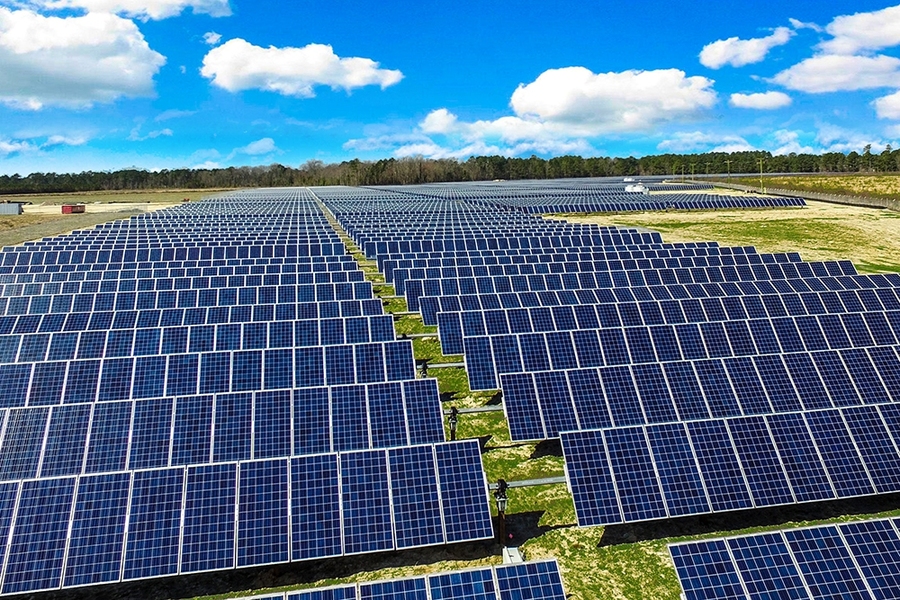"Emerging Trends in Perovskite Solar Cells"
Perovskite solar cells (PSCs) have rapidly emerged as one of the most promising technologies for next-generation solar energy. Named after the mineral perovskite, these cells utilize a unique crystal structure that offers numerous advantages over traditional silicon-based solar cells, including lower production costs and higher efficiency. As the world seeks sustainable and efficient energy sources, the development and optimization of perovskite Solar cells (Solceller) have become critical. In this article, we will explore the emerging trends in PSCs that are driving the future of solar energy.
1. Enhanced Efficiency Through Tandem Structures
One of the most significant trends in perovskite solar cell technology is the development of tandem structures, where perovskite cells are layered on top of silicon or other types of solar cells. This approach capitalizes on the strengths of both materials, allowing for higher overall conversion efficiencies. Recent research has demonstrated tandem cells with efficiencies exceeding 30%, making them highly competitive with traditional silicon cells. This innovation has the potential to revolutionize the solar industry by providing more efficient and cost-effective energy solutions.
2. Stability Improvements
Historically, one of the main challenges with perovskite solar cells has been their stability. Early PSCs were prone to degradation when exposed to moisture, oxygen, and ultraviolet light. However, recent advancements in materials science have led to significant improvements in the stability of these cells. Researchers are developing new perovskite compositions and encapsulation techniques that protect the cells from environmental factors, extending their lifespan and reliability. These advancements are crucial for the commercial viability of PSCs and their adoption in large-scale solar installations.

3. Scalable Manufacturing Techniques
The scalability of perovskite solar cell production is another key area of focus. Traditional silicon cells require high-temperature processes and expensive materials, whereas PSCs can be manufactured using low-cost, solution-based techniques such as spin-coating and inkjet printing. These methods are not only more cost-effective but also allow for the production of flexible and lightweight solar panels. Current research aims to further optimize these manufacturing processes to ensure uniformity and quality at a large scale, paving the way for widespread adoption.
4. Integration with Building Materials
The integration of perovskite solar cells into building materials, known as Building-Integrated Photovoltaics (BIPV), is an exciting trend that combines aesthetics with functionality. PSCs can be incorporated into windows, facades, and roofing materials, allowing buildings to generate their own electricity without compromising design. This innovation has the potential to transform urban landscapes by making renewable energy generation an integral part of building architecture. With ongoing advancements in transparent and semi-transparent perovskite cells, the possibilities for BIPV are expanding rapidly.
5. Environmental Sustainability
As the demand for clean energy grows, so does the importance of environmentally sustainable practices in solar cell production. Perovskite solar cells offer several environmental benefits, including lower energy consumption during manufacturing and the use of abundant, non-toxic materials. Researchers are also exploring ways to recycle and repurpose PSC components, further reducing the environmental impact. These efforts align with global sustainability goals and enhance the appeal of perovskite technology as a green energy solution.
Conclusion
Perovskite solar cells represent a frontier in renewable energy technology, with numerous emerging trends driving their development and adoption. Enhanced efficiency through tandem structures, improved stability, scalable manufacturing techniques, integration with building materials, and environmental sustainability are all contributing to the rapid advancement of PSCs. As research continues and these trends mature, perovskite solar cells are poised to play a crucial role in the future of solar energy, offering a sustainable, efficient, and cost-effective alternative to traditional energy sources.
The potential of perovskite solar cells is immense, and staying informed about these emerging trends will be key for industry professionals, researchers, and policymakers alike. By harnessing the power of perovskite technology, we can move closer to a sustainable energy future.
Comments
Post a Comment